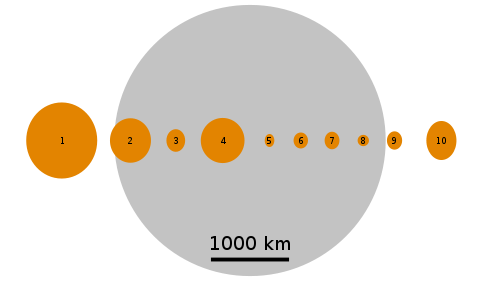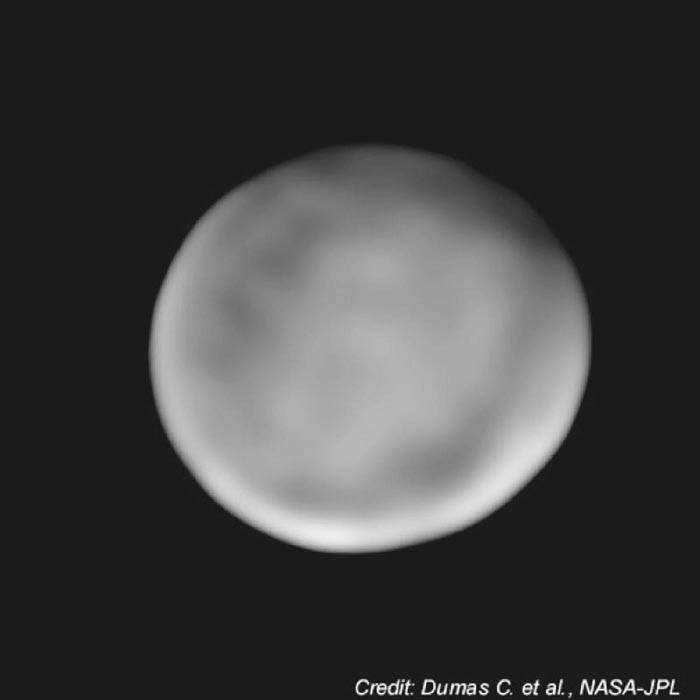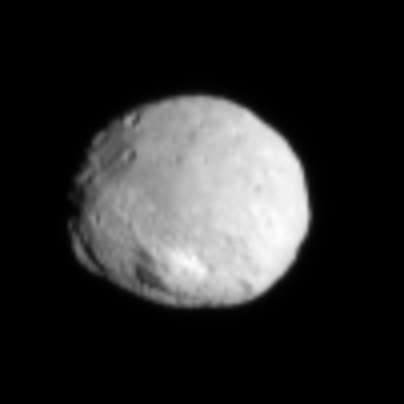Added 1 new A* page:Today (technically; this is still Thursday's page, though :P) the Space Shuttle Atlantis will launch on what will be the final Shuttle mission. To quote from the article: "The space shuttle program was born in 1972, when President Richard Nixon announced its existence to the nation. The orbiters started flying in 1981 and will have made a total of 135 flights when Atlantis' wheels finally roll to a stop later this month." It's going to be kind of weird not having the Shuttles doing their thing anymore.
~~~~~
But mostly today I want to talk about NASA's Dawn spacecraft! It launched in September, 2007, and will finally be arriving at its first destination, the giant asteroid Vesta, on the 16th of this month! It was a slow trip (and that was *with* a gravitational boost from Mars in 2009), but that's because Dawn is powered by ion drives, which are really efficient, but not very powerful; however, their efficiency will really pay off--eventually--for Dawn, since it will be the first spacecraft to be able to orbit two bodies: after orbiting Vesta for a year (according to this NASA article from May), it will proceed on to the largest body in the asteroid belt, the dwarf planet Ceres, reaching it in February 2015.
Dawn may actually make a dwarf planet out of Vesta, since its investigation of the asteroid will show once and for all if Vesta has acquired a sufficiently rounded shape from the weight of its own gravity, which is required for dwarf planet status. Vesta is about 530 km in diameter, the second-largest body in the asteroid belt, containing an estimated 9% of the belt's mass; Ceres, at 950 km in diameter, contains about 32% of the belt's mass. Here's a handy chart--stolen from Wikipedia, like nearly everything else here--showing their sizes relative to the Moon:

image by Vystrix Nexoth (source)
^ "Sizes of the first ten Asteroids to be discovered compared to the Earth's Moon, all to scale. The dwarf planet Ceres is on the far left. The remaining objects, left to right are: 2 Pallas, 3 Juno, 4 Vesta, 5 Astraea, 6 Hebe, 7 Iris, 8 Flora, 9 Metis and 10 Hygiea."
Vesta is known to lack roundness at its south pole: that was knocked off relatively recently--less than a billion years ago--by a big impact that left behind a crater 460 km in diameter, with walls 25 km high. Fragments from that impact have come to Earth as meteorites, so we actually have a pretty good idea of Vesta's chemical composition, thanks to studies of those bits that have landed here.
Still, little is known about what Vesta and Ceres--these giants of the asteroid belt--actually look like! The best photos Earth-based telescopes--and even orbiting ones like Hubble--have managed are blurry things, like this one of Ceres from the Keck Observatory:

image by NASA (source)
But Dawn's already changed that, at least for Vesta! Here's a shot it took on July 1st, when it was about 100,000 km away from the asteroid:

image by NASA/JPL-Caltech/UCLA/MPS/DLR/IDA (source)
By the way, it's a little dated now, but if you want a bit more from me (why? :P) on Dawn, Vesta, and Ceres, there's this article I wrote up about them over a year ago, with some other nifty photos and diagrams.
And we should have much better photos of the possibly-soon-to-be-dwarf-planet in a matter of days, whee!
|
